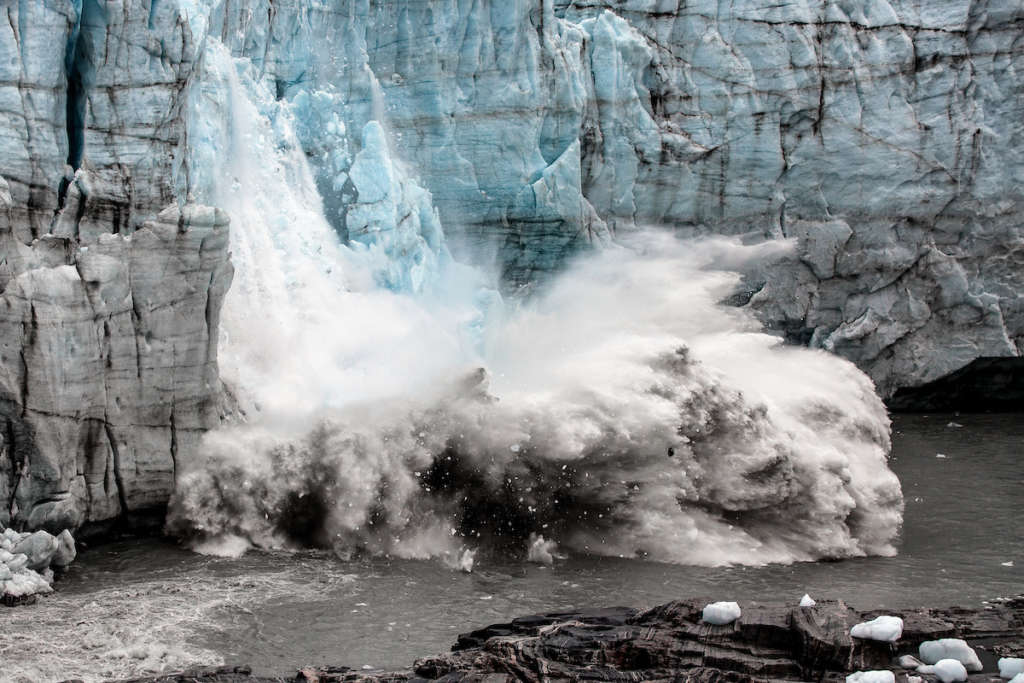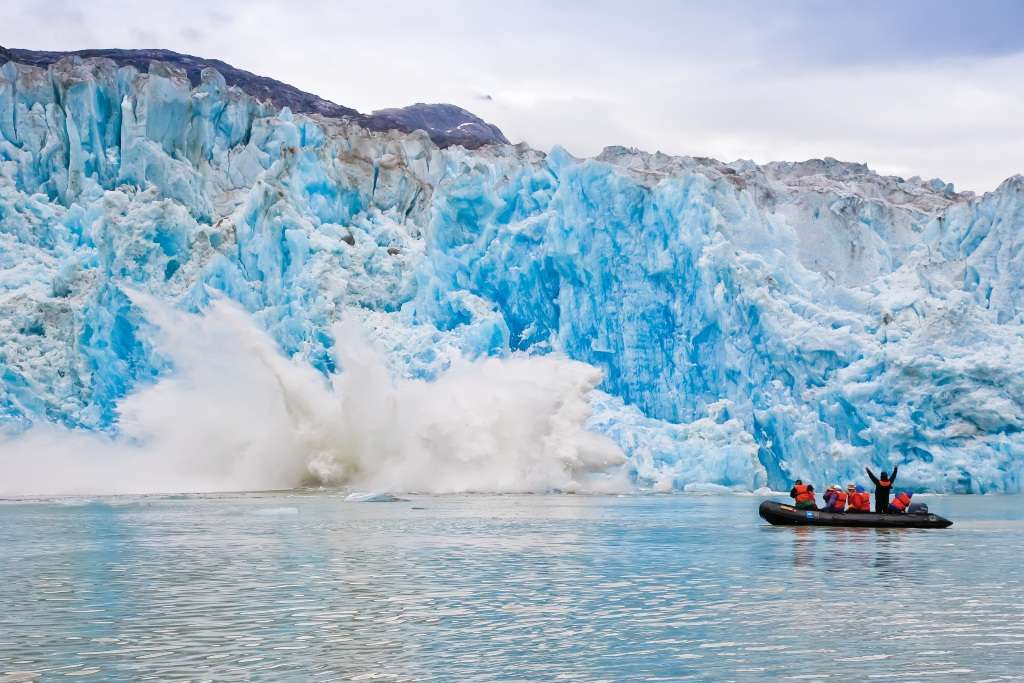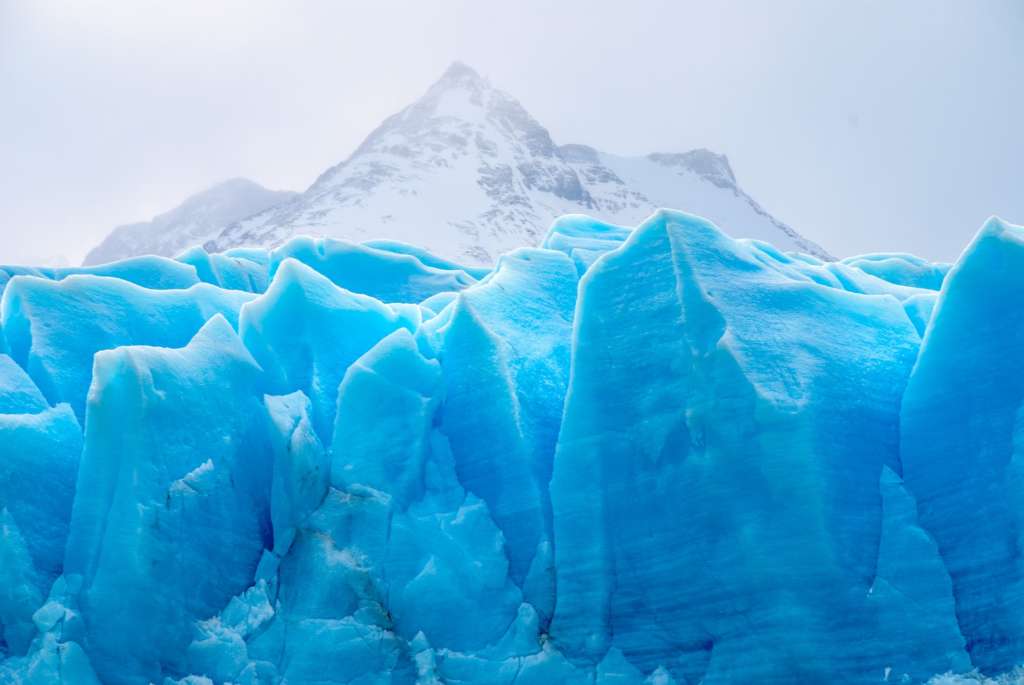Gleaning a bit about Glaciers

by Noah Patton
Glaciers are one of the biggest eco-tourism draw cards in the world with people travelling to the far reaches of the planet to see them. We discover here all you need to know about glaciers, where to find them and what their future is predicted to hold.
How do glaciers form?
Perfect conditions are required to form a glacier. Mountain peaks with snow falling (not rain), and when that snow lands it must not melt – this usually means only extremely cold high-altitude areas will work. The mountain will begin to gradually build on this pile of snow, creating a dense snow pack. The weight of this snow will crush itself until the once light, soft snow becomes ice. Over hundreds of years this will form the behemoth-sized glaciers that are scattered throughout the world. The immense pressure at the bottom of these glaciers will allow it to slide along the surface beneath it with relative ease, with some melted ice as a result of friction acting as a lubricant.

Types of glaciers
Depending on where a glacier starts and where it moves, it can become several different types of glaciers. There are four types: valley glaciers, piedmont glaciers, hanging glaciers, and tidewater glaciers. A glacier that becomes trapped between valley walls is a valley glacier. If it manages to escape this valley and moves into low areas it is a piedmont glacier. If it falls out of a valley it is a hanging glacier. The tidewater glaciers are by far the most popular. A tidewater glacier has moved past the low areas of the piedmont glacier out into the sea. The heat difference between the glacier’s ice and the warm seawater eats away at the bottom of the glacier. The waves will rush in and unevenly erode the lower sections of glaciers. This results in enormous chunks of ice from the top of the glacier calving off and crashing into the ocean. [1]

Famous Glacier Regions:
- Glacier Bay National Park Alaska: This UNESCO listed landscape hosts a staggering 1045 individual glaciers. The longest is the Grand Pacific Glacier at 40 miles and the fastest moving being John Hopkins Glacier (Tidewater)
- Greenland: Not surprisingly, as Greenland has one of the world’s only 2 ice sheets, this country is famous for it’s glaciers. For glaciers that are close to towns try, Kangerlussuaq, Nuuk or Ilulissat. Most of Greenland’s glaciers are slow-moving rivers of ice that flow out of the ice sheet.
- Antarctica: It’s hard to know exactly how many glaciers exist in Antarctica due to the inaccessibility of the world’s most southern continent, but here lies the other ice sheet on the planet (see Greenland above for the first) and as such, is ‘glacial gold’ for those searching out these magnificent wonders. Lambert Glacier is considered the world’s largest glacier at more than 96km wide and 435km long and 2500m deep – this is found in Antarctica. (5)
- South America: running the length of the west side of the continent are the Andes Mountains. There are two large ice fields on the continent – the Northern and Southern Patagonian with about 80% of these glaciers homed in Chile. One of the more famous areas of Patagonia is “Glacier Alley” on the Beagle Channel where most of the glaciers are named after European countries by the 19th century explorers who first mapped the region.
- Norway & Svalbard: with over 2600 glaciers between these two mountain-strewn regions, there is a reason why people flock to these destinations each year. The largest glacier in mainland Europe resides here – Jostedalsbreen – which is about 500 sq kms with ice extending more than 600m down. (4)
- Himalayas: It’s only natural that the mighty Himalayas would host some of the world’s most impressive glaciers. The Rimo glacier group sits at altitudes of between 6000-7000m above sea level. Recent surveys show that the Himalayan glaciers are melting at an alarming rate (6)
Why are they important?
A glacier might just seem to be a lot of frozen water, desolate of plants or wildlife, but these behemoths of nature are essential to the health of our planet. They provide a home for 19 species of birds and 16 species of mammals (8) all of which are so specialised that they face endangerment without their homes. Glaciers are also the world’s fresh water supply with areas in India and the Asian continent relying directly upon summer meltwater for their supplies during the year. They irrigate crops (farmers in Switzerland have used meltwater for centuries). There are also hydroelectric power plants that use glacial resources to power their countries. Glaciers and the process of freezing, thawing and moving provide a delicate world eco balance that all life on our planet relies upon.
The Future.
Higher average temperatures around the world are resulting in the loss of the size and in some cases, whole glaciers. In Montana’s Glacier National Park in the United States there were once 150 glaciers and today there are just 25 left. Columbia University explains the double impact that humans have on glacial systems: ” Humans are exacerbating glacial melt because burning fossil fuels not only releases CO2, it also emits black carbon, a tiny component of air pollution that can absorb one million times more solar energy than CO2. When black carbon falls to earth with precipitation, it darkens the snow and ice, reduces their albedo (the reflecting power of a surface), warms the snow, and speeds up melting.” (9)
Without glaciers, many communities could run out of water altogether, dams are at risk of collapse, landslides can occur on destabilized slopes with plants and wildlife struggling to survive in their new ice-less environment. That is in the short term with long term predictions of rising water levels for the planet.
So let’s all do our best to make the changes that we need to do to save our glaciers – a gift to the entire planet every day.
Bibliography:
- [1] https://www.nps.gov/glba/learn/nature/glaciers.htm
- [2] https://climate.nasa.gov/climate_resources/4/graphic-dramatic-glacier-melt/
- (3) Mapping the World’s Glaciers: http://www.antarcticglaciers.org/glaciers-and-climate/glacier-recession/mapping-worlds-glaciers/
- (4) Beautiful glaciers in Norway – Norway Travel Guide: https://norwaytravelguide.no/norwegian-nature/beautiful-glaciers-in-norway
- (5) Which is the largest glacier in the world: https://www.quora.com/Which-is-the-largest-glacier-in-the-world
- (6) National Geographic.com: https://www.nationalgeographic.com/environment/2019/06/himalayan-glaciers-melting-alarming-rate-spy-satellites-show/
- (8) EarthSky: https://earthsky.org/earth/how-many-different-animals-live-on-glaciers
- (9) Columbia.edu http://climateandlife.columbia.edu/2017/05/08/the-glaciers-are-going-why-this-matters/

